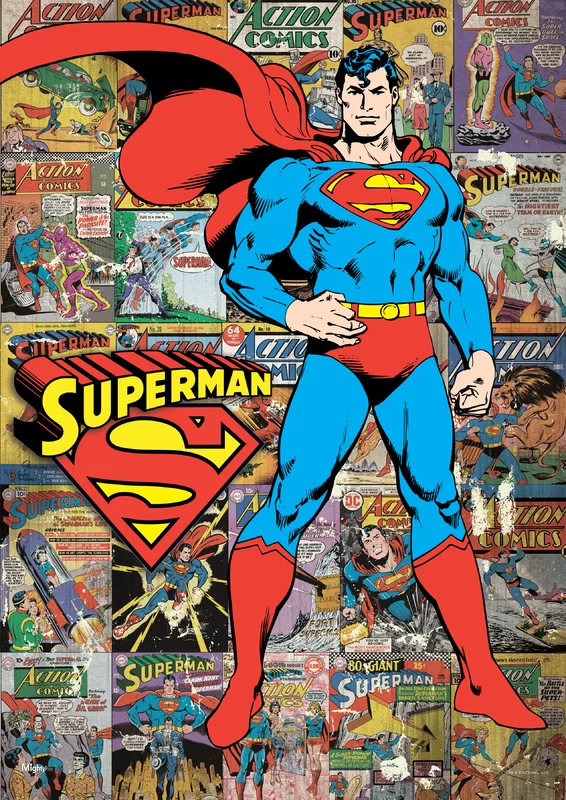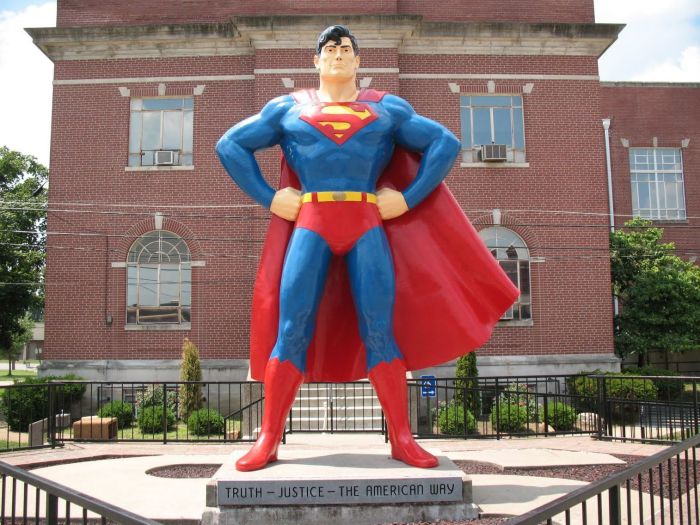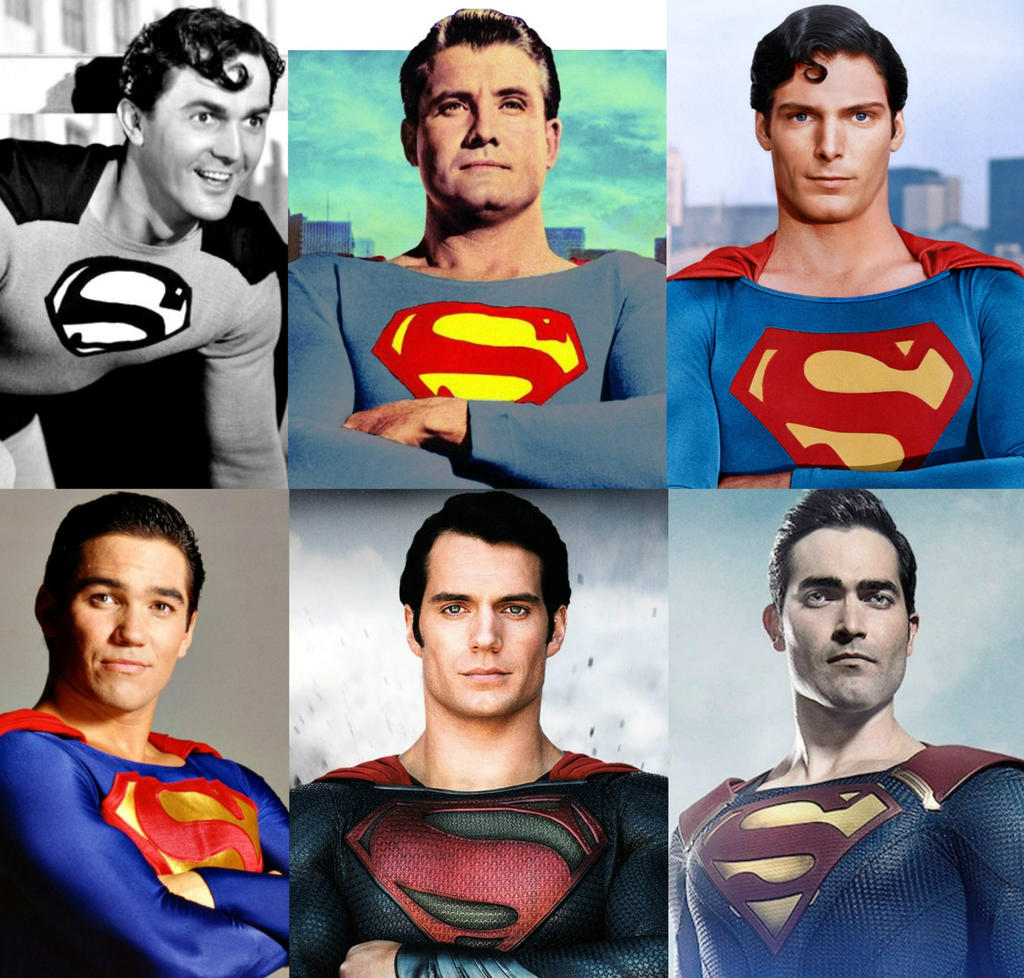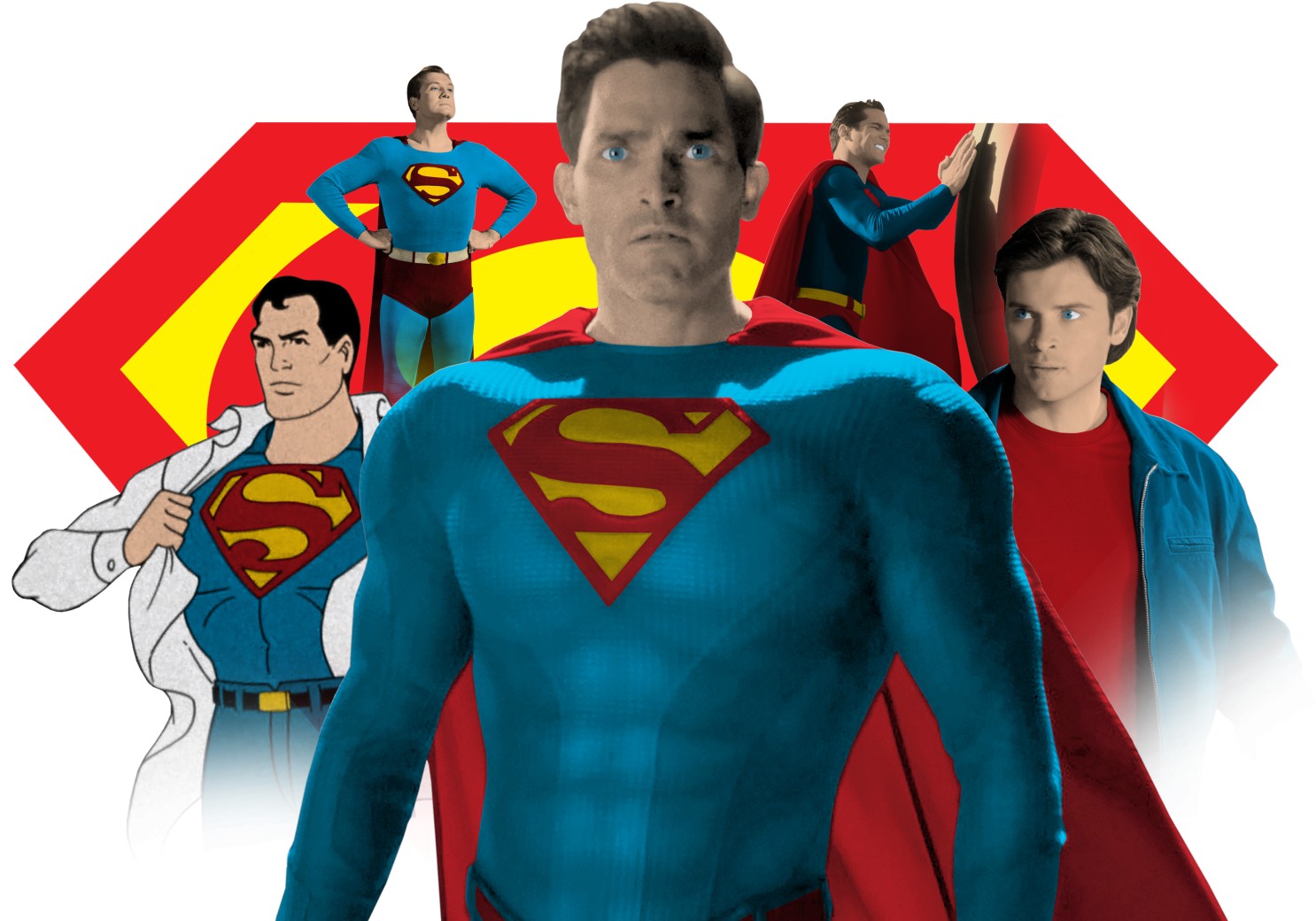
|
|
Metropolis, Nevada - Ghost Town
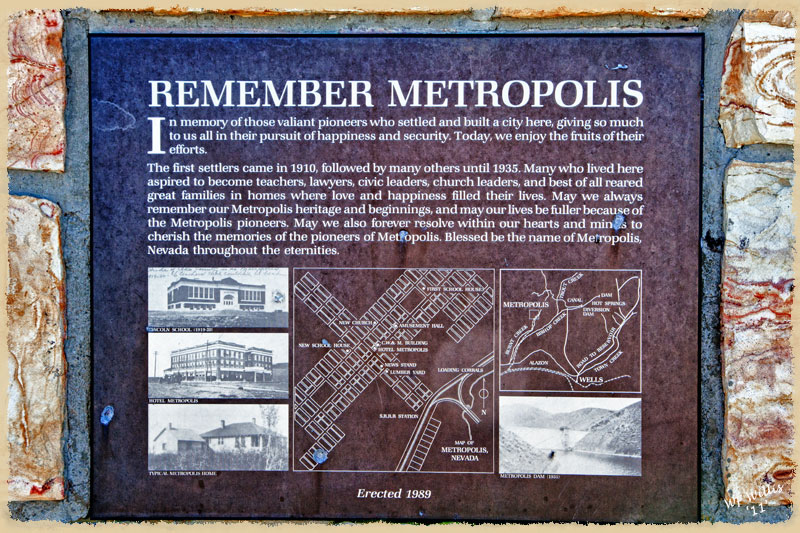
Contrary to reports, Metropolis, Illinois is not the only town in the United States to have ever been named Metropolis. It is, however, a much more thriving and desirable town to visit than Metropolis, Nevada. What was once a thriving community of 25,000 is now nothing more than a ghost town of old hotel & school foundations and desert land littered with artifacts that dictate what once existed here. There is also a stone memorial honoring the town and it's residents which lived here from 1911 - 1947.
Metropolis was a planned town, intended to be the center of a huge farming district. The Pacific Reclamation Company and the Metropolis Land Improvement Company was organized in 1909. Harvey Pierce of Leominster, Massachusetts, was president of both companies, which purchased 40,000 acres below Emigrant Canyon, including the U-7 Ranch, which Morris Badt owned. Thirty-four homesteads sprang up,and a high-powered promotional campaign began. The campaign made fantastic claims as to the soil's fertility, but the alleged rich orchards advertised as being in Metropolis were actually located in Starr Valley. The campaign attracted many young families to Metropolis, but they were not prepared for the hardships to come.
Hotel During Metropolis' Better Days The first phase of development was the construction of the Bishop Creek Dam, which was to provide a plentiful source of water for the town and farms. The scope of the project seems staggering even today. A fifteen-mile road had to be built from the railroad to the dam site. The bulk of the dam comprised 6.5 million broken bricks left over from San Francisco's devastating earthquake of 1906. Pat Moran was the engineer in charge of the dam, and people still marvel over his accomplishments. A small tent city that included housing for the workers, a store, and a saloon developed at the dam site. The $200,000 dam's head gate closed on April 12, 1911. Laura Sanders of Metropolis christened the new dam with a bottle of champagne.
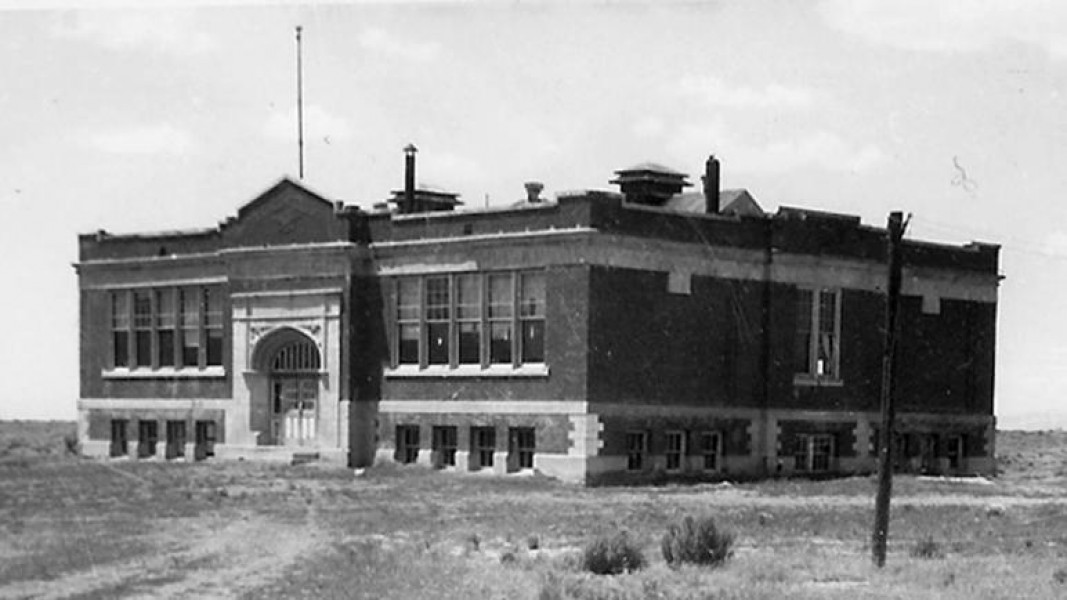
Lincoln School Shortly Before Demolition Once the dam was finished, the promotional campaign became doubly intense. The Mormon church encouraged people to move to Metropolis, and during the summer of 1911, a steady flow of members began to arrive. About 95% of the population of Metropolis population was Mormon. A constant stream of building materials also poured into the town that summer. A town site was laid out, and construction on many buildings began. The promotion of Metropolis succeeded because 1911 and 1912 were very wet years, and vast fields of grain greeted new arrivals. By the end of 1911 there were 700 people in Metropolis. But the company's claim that thirteen inches of rain would fall each year was entirely untrue.
Hotel Ruins Metropolis's first major building was an amusement hall that featured a stage and served as the town's social center. Townspeople also used it as a gym, a church, and a theater. The town's crowning glory was the fifty-room, three-story Metropolis Hotel. The brick building cost $100,000 to construct. It was extremely ornate, with Douglas Fir paneling and a floor made of imported tile. The hotel's first floor also housed a bank, a barbershop, a drugstore, and a general store. The hotel itself offered private baths, electric lights, an elevator, telephone service, and a vacuum-cleaning system. A gala grand opening took place on December 29, 1911, and a special train on the newly completed southern Pacific Railroad's eight-mile spur from Tulasco to Metropolis brought dignitaries from all over the West to Metropolis.
Many hardships followed after Metropolis's boom years. A lawsuit by a group of Lovelock farmers against the Pacific Reclamation Company, claiming that the Bishop Creek Dam impeded their downstream water rights forced the Pacific Reclamation Company into receivership in 1913. The dam never was filled with water. Many years of drought gave rise to the problem of Mormon crickets and jackrabbits, which destroyed everything that did manage to grow. The last residents moved away in 1947 and the town became what it is today, a ghost town.
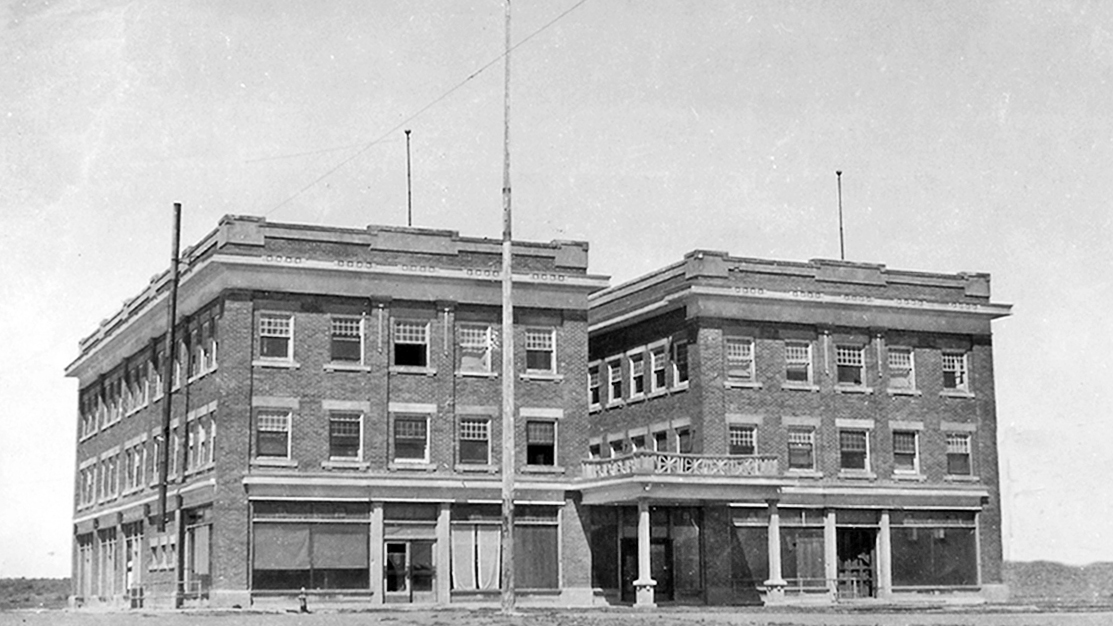
School Ruins A water system, concrete sidewalks, business, saloons, two stores, the Consolidated Wagon Company, the Stephenson Drugstore and a fire house were all part of the once boom town of Metropolis. Beginning about 1925 the town and farming activity steadily decreased. The Southern Pacific abandoned its branch that year. Buildings were moved away and land was abandoned. The famed hotel succumbed to fire in 1936; the post office closed in 1942 and the school was shut down five years later.
Today, many foundations still stand. The old bank vault stands amidst the ruins of the Metropolis Hotel. Many other foundations show the layout of the town, while large sections of the concrete sidewalks are left. No one lives in the town today, but about seven ranches are left.
